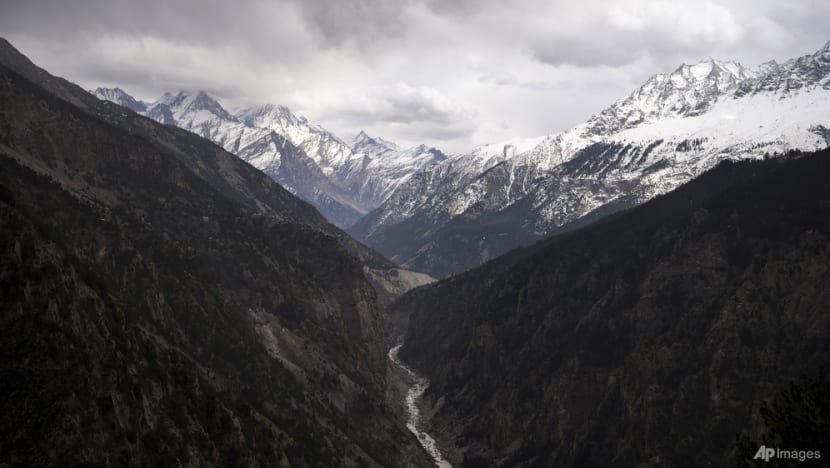Commentary: China and South Asia need consensus on water amid tensions
Though the collective challenge of water scarcity is obvious, India’s relations with China and Pakistan remain in a stalemate, says Hasan Jafri.


This audio is generated by an AI tool.
SINGAPORE: In the foothills of the Himalayas, China is constructing the world’s biggest dam. The Motuo Hydropower Station is a testament to the country’s infrastructure ambitions, and when completed, will provide clean energy to its less developed western provinces.
But the commencement of construction was met with renewed concerns from China’s neighbours, India and Bangladesh.
The project will use water from the Yarlung Zangbo river to generate up to 60,000 megawatts of electricity when completed. This river, high in the Tibetan plateau, feeds into the Brahmaputra River which runs across India and Bangladesh and drains into the Bay of Bengal. The Brahmaputra is sacred to Hindus and shapes the region’s culture and mythology.
The potential of uncertain or reduced water flow arising from the Chinese dam can affect millions who rely on the river for their livelihoods. It is also near the disputed border between China and India, making the project a geostrategic concern for India.
China has assured that the dam won’t affect India, but New Delhi is not taking chances: It is building a dam on its side of the border too.
The waters shared by India and Pakistan have also been muddied by politics. After a terrorist attack in Kashmir in April that India blamed on Pakistan, New Delhi unilaterally suspended the Indus Waters Treaty that regulates the division of water between the two neighbours.
Once a symbol of transborder cooperation between two rivals, the fate of the 65-year-old treaty now hangs in the balance, as does future water supplies into Pakistan.
WATER SCARCITY IS A COLLECTIVE THREAT
Water scarcity is a global environmental challenge, but it is particularly acute in South Asia. Glaciers that feed the rivers are melting at a record pace because of climate change.
Outside the polar regions, the Himalayas hold the world’s largest ice reserves. In the decade ending 2020, these glaciers melted 65 per cent faster than the decade before, according to the International Center for Integrated Mountain Development.
Growing populations and industrialisation have added to water stress in the region, forcing policymakers to build more dams, canals, barrages and reservoirs to meet demand. South Asia and its 1.7 billion inhabitants are facing a multidimensional, transborder environmental crisis.
WATERS THAT DIVIDE
Though the collective challenge is obvious, regional relations remain in a stalemate. From a disputed border to commerce, China and India are locked in strategic competition in Asia.
After the Kashmir terrorist attack, India and Pakistan fought intensely but briefly. Bilateral relations are currently almost non-existent. For Delhi, Beijing’s “all-weather” relationship with Islamabad poses challenges along two fronts in the north and the west. All three parties vie for influence in the region, from Afghanistan to Nepal.
China controls the upstream portions of rivers vital to India’s economy and national security. Despite China’s assurances that it will not use water as a weapon in any potential conflict, India is not taking chances.
Water has been weaponised by India’s suspension of the Indus Waters Treaty; Pakistan has already warned that any disruption in water supplies from upstream India will be seen as an act of war. The threat is not to be taken lightly.
Many of the issues that divide the region – such as long-standing disputes over borders – are either insurmountable or will take time and political will to resolve. Yet water security is a collective issue that political leaderships can coalesce around because climate change knows no national boundaries nor historical animosities.
CONFIDENCE-BUILDING MEASURES
Last month, India’s Minister of External Affairs S Jaishankar raised water security as an issue with China on a visit to reset relations between the neighbours. It is not known what private assurances Beijing provided but its official statement omitted any reference to the issue.
There is no formal water-sharing agreement between the two, and the current political climate makes it difficult to negotiate one. But China can take small confidence-building measures. This includes resuming the sharing of real-time hydrological data from the Himalayas to India, just as it provides the data to Bangladesh. The data are not a political tool; they help plan to manage water flows and mitigate natural disasters.
Such a move can provide the impetus for greater cooperation, even an eventual formal regional agreement which can allow countries to coordinate policies on water security and ecological challenges such as floods and droughts. China has done just that in Southeast Asia via the Lancang-Mekong Cooperation mechanism.
While China and India are at least on talking terms, relations between India and Pakistan are completely broken. Since the Kashmir attack and the subsequent four-day conflict, each country is on a diplomatic offensive to tilt international opinion.
If any realistic confidence-building measures are to be considered, the Indus Waters Treaty is the perfect starting point. The treaty has stood the test of time, but a long-delayed review is now due. By restoring the treaty and both sides agreeing to update it, South Asia will be a lot safer – both from climate change and politics.
Hasan Jafri is a Singaporean analyst who advises clients on political and policy risk.


















